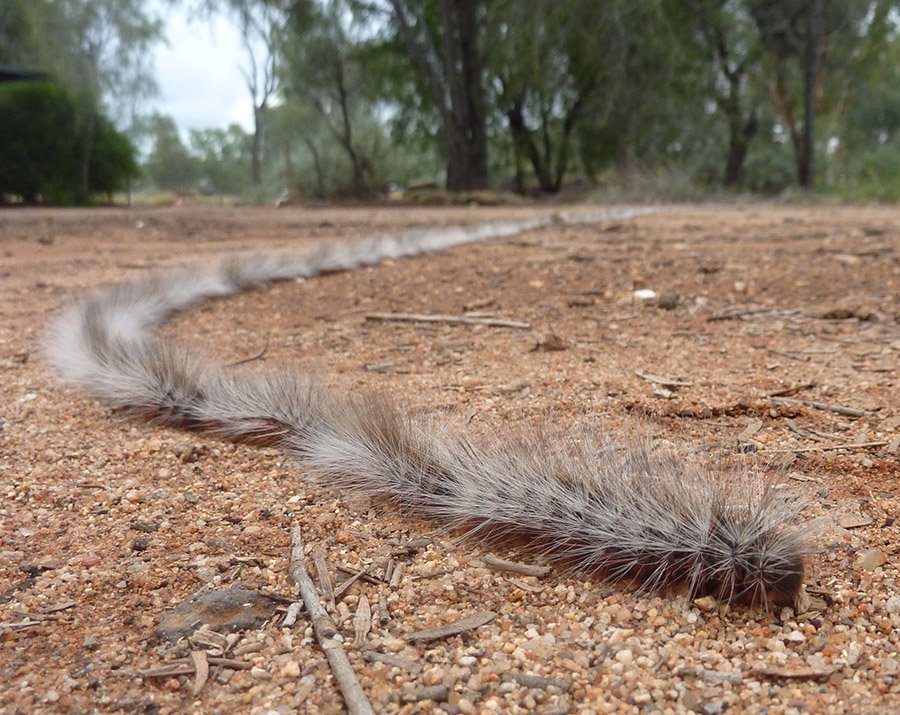These congregating caterpillars are even more dangerous than they look

Bec Crew
Bec Crew

IN ONE MOMENT, these congregating larvae can be found marching in a never-ending circle of mindless confusion, and in another, they’re killing baby horses in the womb.
Meet Ochrogaster lunifer: one of Australia’s strangest species of caterpillar, wielding no less than 2 million finely barbed hairs that will inflict a nasty case of hives – or worse – if you happen to touch one.
Found throughout coastal and inland Australia, they feed on acacias and beefwood, and very occasionally on eucalypts, and they display a fascinating behaviour that helps them find new sources of food.
Once these caterpillars have stripped a plant of its edible foliage, they will wander off to find more, leaving a silken trail behind them.
Processionary caterpillars instinctually follow these silken trails, so it’s not uncommon to see groups of up to 200 of them moving head-to-tail in a tightly formed line, seeking a fresh supply of food at the other end:

(Image Credit: Chris Watson/Shutterstock)
Of course, this behaviour has its downsides – if two caterpillars find the silken trail left by the other, they will follow each other, walking around in an endless circle, seeking food that will never actually appear.
And if a whole group of processionary caterpillars do this, they will end up in one big, confused mess.
Also kinda cute, but also a bit gross, is the reason these insects are nicknamed bag-shelter moths. Large numbers of these caterpillars live together in a bag nest made from silk, excrement, skin particles, and other debris, which they leave periodically in search of food, until they’re ready to pupate and transform into their moth form underground.
The real bummer about these insects is the fact that, even if pets and farm animals are cluey enough to keep away from the caterpillars themselves, if their hairs are shed and accidentally ingested, they can cause a world of pain.
As Tim Low reported last year, these caterpillars are a particular problem for horse breeders:
“Should a pregnant mare ingest some of these hairs when they fall on grass, they can penetrate the intestinal wall, allowing bacteria into the bloodstream and infection of the placenta. You would not think caterpillars would matter to horses, but their hairs are a dire problem in the Hunter Valley, where they’ve caused hundreds of thoroughbred foals to be aborted.”
Here are some processionary caterpillars in action, doing what they do best (skip to 0:14):




